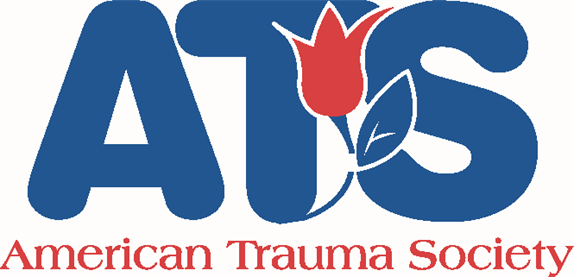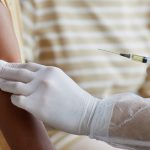Mechanicsburg, Pa. – According to the Pennsylvania Game Commission (PAGC), 860,743 general hunting licenses were sold in 2019. Hunters can experience a wide array of dangerous situations while in the woods. Hunters face a variety of injuries; fractures, sprains, surface and deep wounds, and blisters, just to name a few.
The American Trauma Society, Pennsylvania Division (ATSPA) is partnering with Cumberland Goodwill EMS in the hope that hunters will have a better experience in 2020. Injuries can be unexpected, but preparation will mitigate their effects on a successful trip.
Before a hunt, use these tips to prepare and prevent tragedy:
Plan – before you leave, learn about potential hazards and plan appropriately. Check the weather and dress for the occasion. Pack extra water and food in case you get stranded. Also pack a first aid kit, flashlight, and whistle.
Communicate – let family or friends know where you are going, what time you will be leaving, if you expect to check in and the latest time you expect to be back.
Learn – having a basic knowledge of wilderness first aid may prevent a hunting trip from becoming a tragedy. Learning the basic skills below can improve the likelihood of survival and prevent serious injury.
The below instruction is not a replacement for proper medical training, advice, or attention. In all emergency situations, you should contact 911 immediately.
Bleeding Control
Depending on the situation, different types of bleeding control strategies may be needed. As with any open wound, it is very important to keep the wound clean and free of debris.
Direct Pressure & Elevation – For most cuts and surface wounds, direct pressure and elevation will work to control bleeding. To perform direct pressure, use your hand and a piece of fabric, preferably sterile gauze, to apply pressure directly to the source of bleeding. If blood soaks through the gauze, leave it in place and add more on top. If movement will not create more harm, elevation of the extremity may help decrease the bleeding.
Wound Packing – For injuries where it may be difficult to apply a tourniquet, pack (or stuff) the wound with hemostatic gauze, plain gauze, or a clean cloth. Afterward, apply direct pressure.
Tourniquet – Tourniquets are tight bands of cloth or fabric, used to completely stop the blood flow to a wound. Not all situations require a tourniquet. Tourniquets are for limb injuries only and cannot be applied to the head or torso.
To apply a tourniquet:
- Find the source of the bleeding and apply pressure. If the bleeding does not slow or stop when pressure is applied, you will need to apply a tourniquet.
- Position the tourniquet. The Red Cross recommends placing the cloth 2 inches above the wound and not on a joint. Tie a square knot, like the knot used when tying your shoes, but without the loops.
- Use a stick, pen, marker, or other item strong enough to act as a lever to twist the tourniquet tighter and hold it in place. Place your lever on the first knot and tie another square knot with the loose ends
- Twist the lever to increase the pressure. Watch the source bleeding for slowing, continue to twist until all the bleeding has stopped or is significantly reduced.
- Once the bleeding has slowed or stopped secure the lever and pressure by tying the ends to the person’s arm or leg.
- Mark the time. It is very important for first responders and medical staff to know when you applied the tourniquet as they can only be applied for a certain amount of time.
If the item that created the wound is still in the injury do not remove it. Items such as arrows, knives, branches, or rocks that are stuck in a person could be holding the source of bleeding closed and removing the item will cause more damage.
Splints
The first thing you will need when making a splint is something rigid to stabilize the injury. If you are using something with sharp edges or something that might cause splinters, such as a stick or board, be sure to pad it well by wrapping it in cloth. Proper padding can also help reduce additional pressure on the injury.
Items you can use include:
- rolled-up newspaper
- heavy stick
- board or plank
Place the splint so that it rests on the joint above the injury and the joint below it. You should fasten the splint tight enough to hold the body part still, but not so tight as to cut off circulation. You should also avoid placing ties directly over the injured area.
Once you secure the limb and immobilize the joint, you can focus on managing the pain. This can be done through elevation and pain medication.
Blisters
Blisters may not be life threatening but they can become painful and cut a hunt short. Fortunately, they are simple to prevent and manage, especially if addressed early.
- Loosely cover the blister with a bandage. Bring in the sides of the bandage so that the middle of the bandage is a little raised.
- To protect blisters in pressure areas, such as the bottom of your feet, use padding. Cut the padding into a donut shape with a hole in the middle and place it around the blister. Then, cover the blister and padding with a bandage.
- Avoid popping or draining a blister, as this could lead to infection.
- Keep the area clean and covered.
Wilderness first aid training is offered by the American Red Cross and the Boy Scouts of America. This training includes assessing an injury, proper treatment of an injury and how to get help. It also comes with in depth instructions on what to do in case of an emergency.
More information on hunting safety is available at www.atspa.org or by calling (717) 766-1616.
The American Trauma Society, Pennsylvania Division is a non-profit organization committed to trauma prevention and mitigation through education and advocacy. Our work includes providing presentations and educational materials on many trauma prevention topics, including concussions, water safety, senior falls, bike safety, traffic safety and much more.




